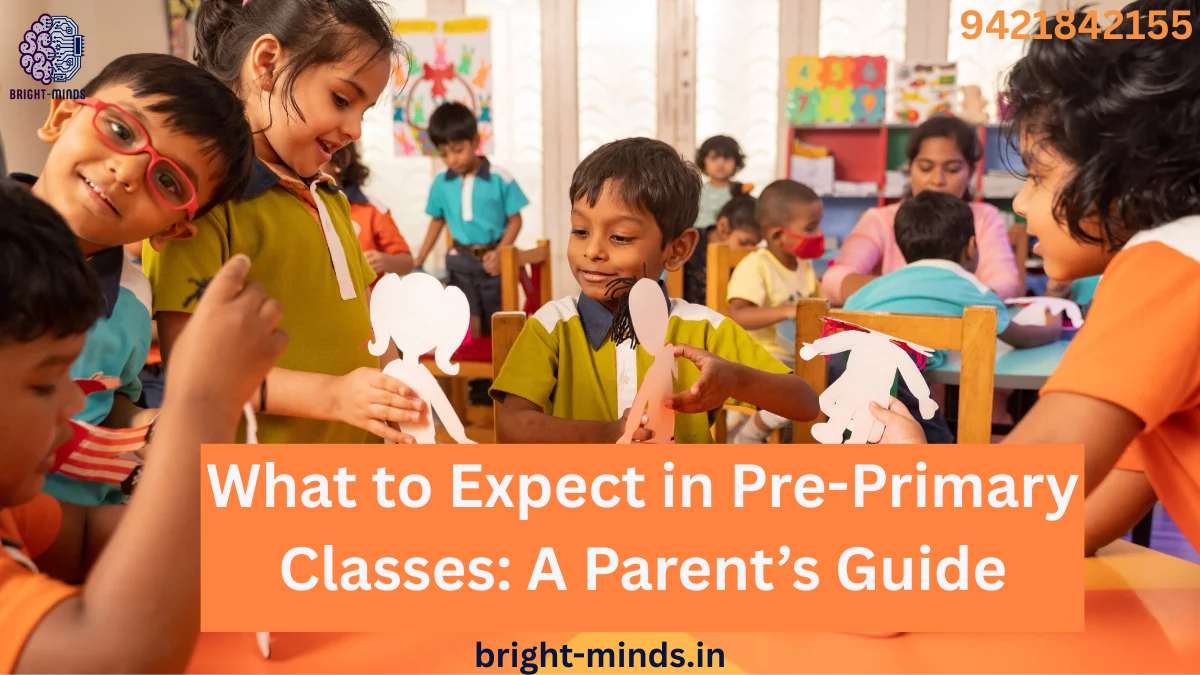Starting school is a big milestone—for your child and for you as a parent. It’s natural to feel a mix of excitement, nervousness, and maybe even a little confusion. After all, the pre-primary stage isn’t just about coloring and singing songs (though there’s plenty of that too!). It lays the foundation for your child’s future learning, social development, and even emotional resilience.
Whether you’re a first-time parent or just looking to better understand how pre-primary education works, this guide is here to simplify it all. Let’s walk through what to expect, what really matters, and how you can support your little one during these early, impressionable years.
Understanding Pre-Primary Education: What Is It, Really?
Pre-primary education typically covers the early years before formal schooling begins—usually between the ages of 2 to 6 years. These classes may be called nursery, playgroup, LKG (Lower Kindergarten), and UKG (Upper Kindergarten) in various educational systems.
But don’t be fooled by the playful environment. These years are crucial for:
- Developing language and communication skills
- Learning basic numbers, letters, and shapes
- Building social and emotional intelligence
- Establishing classroom routines and behaviors
Think of pre-primary education as the soft launch of your child’s learning journey.
Market Trends: Why Pre-Primary Education Matters More Than Ever
The global early childhood education market is booming—and for good reason. According to recent studies, children who attend quality pre-primary programs:
- Show improved academic performance in later years
- Develop stronger critical thinking and problem-solving skills
- Are more likely to complete higher education
In today’s fast-paced world, cognitive flexibility, emotional intelligence, and creativity are becoming just as important as academics. The earlier we nurture these skills, the better prepared our children will be for the future job market and personal growth.
What You Can Expect in a Typical Pre-Primary Classroom
So, what does a day in pre-primary class look like? Here’s a glimpse:
1. Structured Play Time
Kids learn best through play. Activities like building blocks, role play, puzzles, and interactive games help with motor skills, spatial awareness, and imaginative thinking.
2. Circle Time
This is where children come together for stories, songs, and discussions. It promotes language development and listening skills while also teaching patience and group participation.
3. Thematic Learning
Many schools use weekly or monthly themes—like “animals,” “seasons,” or “my family”—to introduce new vocabulary and concepts in a fun, relatable way.
4. Social Development
From sharing toys to resolving playground disputes, children start learning how to communicate, empathize, and cooperate with peers.
5. Basic Academics
Simple concepts in literacy and numeracy are introduced through worksheets, flashcards, and songs. But the focus is always on learning by doing, not rote memorization.
Real-World Applications: It’s Not Just About School Readiness
Believe it or not, the lessons kids learn in pre-primary classes often mirror the soft skills adults use every day at work and in life:
- Time management (routine-based activities)
- Teamwork (group projects and games)
- Creative problem-solving (open-ended play)
- Resilience (managing transitions and emotions)
This is why early education is no longer viewed as optional—it’s an essential investment in lifelong success.
Tips for Parents: How to Support Your Child’s Pre-Primary Journey
Transitioning to school life can be emotional for both child and parent. Here’s how to make it smoother:
✅ Establish a routine: Start waking up and sleeping at consistent times a few weeks before school begins. Predictability eases anxiety.
✅ Talk positively about school: Avoid words like “Don’t cry!” Instead, say “You’re going to have so much fun today!”
✅ Encourage independence: Practice small tasks like packing a bag, putting on shoes, or using the toilet.
✅ Stay in touch with teachers: Regular updates help you understand your child’s progress and any areas needing extra attention.
✅ Celebrate small wins: Completing a week without tears? That’s worth a celebration!
Common Questions Parents Ask (And Honest Answers)
Q: Will my child learn to read and write in pre-primary?
A: They’ll start with pre-reading and pre-writing skills like recognizing letters, sounds, and using crayons or pencils. Formal reading and writing typically begin in Grade 1.
Q: My child is shy. Will they fit in?
A: Absolutely! Pre-primary programs are designed to support different personalities. Teachers are trained to help each child adjust at their own pace.
Q: Is it okay if my child just plays all day?
A: Yes—because play is powerful. It’s how children explore, question, and internalize concepts at this stage.
Motivation for the Road Ahead
Watching your little one walk into class for the first time might bring tears to your eyes—but trust the process. Every paint-splattered shirt, every messy lunch, every “What did you learn today?” moment is a step toward independence, confidence, and lifelong learning.
This is just the beginning of an exciting journey. You’re not just preparing your child for school—you’re preparing them for life.
Explore More: Dive Deeper Into Early Education
Want to take your understanding even further? We offer expert-designed early childhood development courses and resources tailored for parents, caregivers, and educators. Learn how to make the most of these foundational years with practical tools and evidence-based insights.
Also Read:
https://bright-minds.in/unlocking-word-meaning-for-class-ukg-english-to-hindi/

